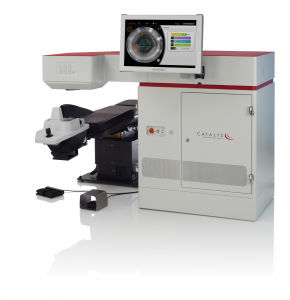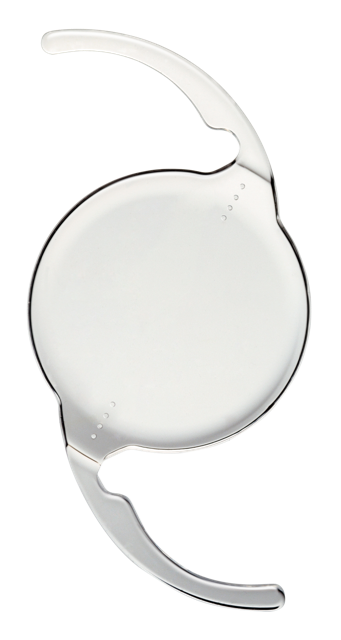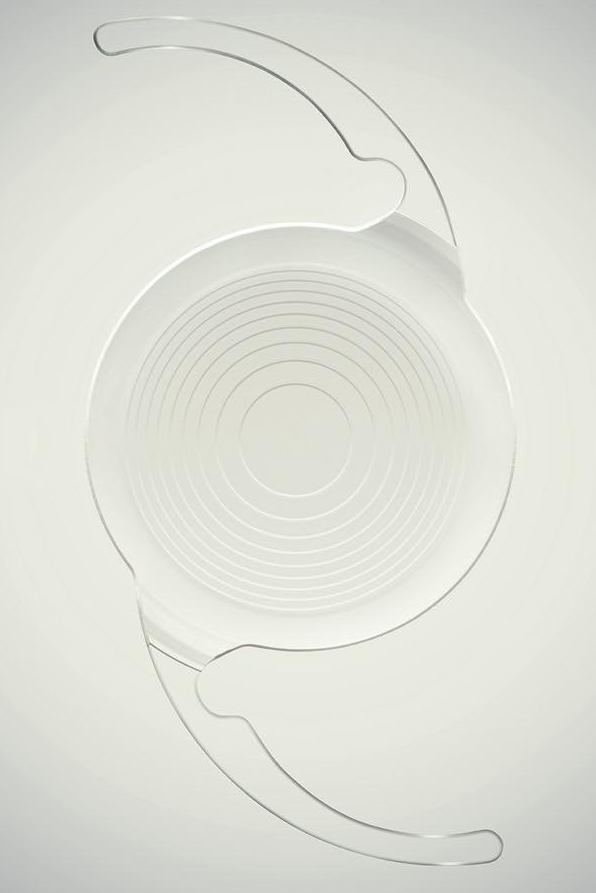Cataract surgery is a very common and successful procedure that allows patients to dramatically improve their vision. Our Surgeons Dr. Anna Allen, Dr. Rahul Patel and Victoria Epstein utilize the latest technologies and modern equipment, including newest state of the art biometer Argos that allows most accurate measurements to achieve excellent outcomes, that not only restore clarity of vision but may also decrease the need for glasses after surgery. To learn more about cataracts click here or call us to schedule an evaluation.
Refractive Laser Assisted Cataract surgery
At Albany Eye Associates new technologies such as CATALYS Femtosecond Laser and ORA are available.
All our surgeons are certified in this FDA approved procedure. Laser assisted cataract surgery offers less endothelial cell loss during surgery and improves precision of lens centration during surgery. Refractive Laser Assisted Cataract Surgery is frequently used in combination with Toric and Multifocal lenses. Please discuss with your surgeon during your appointment if this may be a good option for you.
ORA (Optiwave Refractive Analysis) instrument is used during surgery to obtain intraoperative data. This allows precise selection of lens power and may be recommended in some patients especially in patients who have previously had LASIK.
Premium lens implants
If you doctor recommended cataract surgery you should know about intraocular lens options available to you. During cataract surgery your surgeon will remove cataract and insert a new clear lens. Standard lens implant usually allow patient to see well at distance but patient will need glasses to read and to correct astigmatism. Premium lenses allow patient to reduce dependence on glasses. However they are not covered by insurances and there is an out of pocket coast. Here is a brief synopsis.
Toric lenses
 These lenses are used to treat astigmatism. Astigmatism makes vision blurry at both near and distance. If a patient has astigmatism and wants to see clear, a Toric lens may be an option. You may need topography a special measurement of the cornea, front part of the eye before surgery. During surgery Toric lens is aligned with the axis of astigmatism by your surgeon. Toric lenses greatly improve uncorrected vision in patients with astigmatism.
These lenses are used to treat astigmatism. Astigmatism makes vision blurry at both near and distance. If a patient has astigmatism and wants to see clear, a Toric lens may be an option. You may need topography a special measurement of the cornea, front part of the eye before surgery. During surgery Toric lens is aligned with the axis of astigmatism by your surgeon. Toric lenses greatly improve uncorrected vision in patients with astigmatism.
Multifocal Lenses
 Multifocal lenses use advanced design that allows patients to see clear both near and distance. They are implanted during surgery in a similar way to standard IOL. Many patients that received multifocal lenses rarely use glasses and are very happy to see clear at a wide range of distances. Not every person is a good candidate for multifocal lens. Some coexisting eye diseases may interfere with best performance of these lenses. Also multifocal lenses may produce halos around lights in some patients, especially when driving at night. These typically become less bothersome after a few month. Several Multifocal lens options such as PanOptix, ReSTORE, Technis Multifocal, are available.
Multifocal lenses use advanced design that allows patients to see clear both near and distance. They are implanted during surgery in a similar way to standard IOL. Many patients that received multifocal lenses rarely use glasses and are very happy to see clear at a wide range of distances. Not every person is a good candidate for multifocal lens. Some coexisting eye diseases may interfere with best performance of these lenses. Also multifocal lenses may produce halos around lights in some patients, especially when driving at night. These typically become less bothersome after a few month. Several Multifocal lens options such as PanOptix, ReSTORE, Technis Multifocal, are available.
Increase depth of focus lenses
These lenses are a newest addition to the premium lens options our patients have. Lenses such as
Symphony and Vivity allow patients to see well at distance and intermediate (computer, cell
phone) range, but may require mild reading glasses correction when reading small print. Benefit of such lens is that they have very little halo effects (in clinical studies patient had similar level of halos compared with standard lenses). Also Symphony, Eyhance and Vivity IOL can be used to correct
astigmatism.
Talk to your surgeon about you options. Financing is available through Carecredit.
